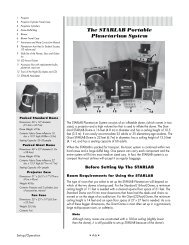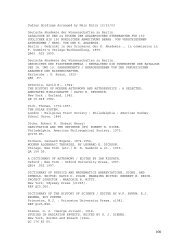K-6 Activities - Dudley Observatory
K-6 Activities - Dudley Observatory
K-6 Activities - Dudley Observatory
Create successful ePaper yourself
Turn your PDF publications into a flip-book with our unique Google optimized e-Paper software.
K–6 <strong>Activities</strong> • B–28 •<br />
24-hour period. Before each advancement, students should reset their Dipper<br />
Finders for the correct time and make a prediction on the Dipper’s location.<br />
Following each advancement they should observe the position of the Dipper in<br />
relation to their prediction as well as the horizon, zenith, and other stars.<br />
6. Using annual motion and the ecliptic, and the same inquiry procedures as<br />
above, show the position of the sun by season and the position of the Dipper in<br />
the evening sky on the same date.<br />
Follow-Up <strong>Activities</strong><br />
1. Each student should take his Dipper Finder home and use it to locate the Dipper<br />
and North Star in the night sky.<br />
2. The Dipper Finder is large enough to include more stars. Ask students to plot<br />
the Little Dipper, Cassiopeia, and Draco on their Dipper Finders from the sky at<br />
night. On the next school day, they should check their success with a star chart.<br />
3. At upper elementary levels, guide students in using their Dipper Finders and the<br />
Big Dipper to tell the time of night (see Engelbriktson, Greenleaf, Let’s Explore<br />
Outer Space, pp. 24-36 for directions for using the Big Dipper as a clock in the<br />
sky).<br />
Evaluation<br />
Show the Big Dipper in four different positions at 9 p.m. on the planetarium dome<br />
and ask students to use their Dipper Finders to discover the month in which each position<br />
would occur.<br />
Note<br />
For the Dipper Finder pattern used in the activity, see the next page.





